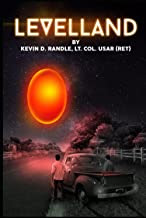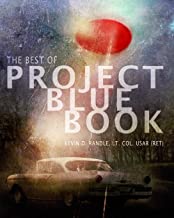There
are some facts about Project Mogul that seem to get lost in the minutia of the
debate so that the same errors are frequently repeated. These are facts that
should not be in dispute but somehow they keep getting missed, or misused, so I
thought, in an effort to annoy everyone, I would publish these truths and see
how far that went.
1.
Mogul Flight No. 4 was cancelled. It did not fly, there is no record of it
anywhere and that number is skipped in the accounting. Contrary to what Charles
Moore claimed, it did not perform as well or better than Flight No. 5 because,
had it flown and done so, there would be records of it and it would be listed
as the first successful flight in New Mexico.
2.
All the launches made in June happened after 5:00 a.m. (0500 hours) which was
after dawn. These flights were made in daylight and that was one of the
requirements levied on the project by the CAA (think FAA). The purpose was for
safety of aerial navigation because a train or array of balloons six or seven
hundred feet long could cause a catastrophic accident.
(For
those keeping score at home, I again print, from Special Report #1, Covering the Period from January 1, 1947 to April
30, 1947, the restrictions placed on flights by the CAA:
Restriction
on the project is the Civil Aeronautics Authority (forerunner to the FAA)
requirement that balloon flights be made only on days that are cloudless up to
20,000 feet.
3.
Although it seems that Moore was suggesting that there had been flight of
balloons launched around 2:30 a.m. (0230 hours) early in the morning of June 4,
there is no documentation for this. CAA restrictions would not have allowed for
a full array launch and Crary had already noted that the flight had been
cancelled.*
4.
Crary was out on the range firing test shots, which does not suggest a balloon
flight. Crary had been testing ground equipment on other occasions when it was
clear that there was no balloon flight. Suggesting that these notations prove
the flight is to ignore the documentation available.
5.
Although McAndrew, in his Roswell: Case
Closed published an “illustration of a Project Mogul balloon train similar
to the one found on a ranch 75 miles northwest of Roswell,” that is a
misleading statement. There is no evidence that the Mogul Flight No. 4 flew and
the composition of Mogul Flight No. 5 is different than the one McAndrew used
as his illustration. There were no rawin radar targets on it. (I’m going to
note here that this was extremely disingenuous of McAndrew. He had to know that
the composition of the flights varied radically but included the illustration
of Flight No. 2, which was also cancelled, as if it were typical. Rawin radar
targets were not included in many of the flights until later because they were
having poor luck with the radars.)
6.
Project Mogul was not so highly classified that the members of the NYU team in
New Mexico didn’t know the name. Repeated references to Mogul are made in
Crary’s diary, so that it is clear that the name was known to those in New
Mexico. This has been used as the reason that those officers in Roswell failed
to recognize the balloon remains for what they were.
7.
The first recorded flight in New Mexico is Flight No. 5, which is noted as the
first successful flight there. No mention is made of Flight No. 4, even though
Moore said that it was as successful or more so that Flight No. 5. Even Flight
No. 6, which was labeled as “unsuccessful” is carried in the records.
The
point where we begin to see some real controversy and the possibility of a
balloon array is a note in Crary’s diary for June 4 that said, “Flew regular
sonobuoy mike up in cluster of balloons…”
8.
A cluster of balloons was launched later in the day on June 4. Crary noted only
that it was a cluster that carried a sonobuoy. Given the restrictions on the
balloon flights by the CAA, and given Crary’s descriptions of other, similar
flights, it can be suggested that this was only a cluster of balloons with a
limited number of balloons and a sonobuoy but no rawin radar targets.
8a.
A cluster of balloons was launched later in the day on June 4. This was the
delayed Flight No. 4 that carried a full array including the rawin radar
targets that scattered the metallic debris found by Mack Brazel.
Another
area of controversy is the interview published in the July 9, 1947 issue of the
Roswell Daily Record. Both sides quote from it, as if it proved that Brazel
found balloon debris or proved that he didn’t.
9.
According to the story, “Harassed Rancher Who Located ‘Saucer’ Sorry He Told
About It.” The article said:
Brazel
said that he did not see it fall from the sky and did not see it before it was
torn up, so he did not know the size or shape it might have been, but he
thought it might have been about as large as a table top. The balloon that held
it up, if that was how it worked, must have been 12 feet long, he felt
measuring the distance by the size of the room in which he sat. The rubber was
smoky gray in color and scattered over an area of about 200 yards.
When
the debris was gathered up the tinfoil, paper, tape, and sticks made a bundle
about three feet long and 7 or 8 inches thick, while the rubber made a bundle
about 18 or 20 inches long and about 8 inches thick. In all, he estimated the
entire lot would have weight maybe five pounds. There was no sign of any metal
in the area which might have been used for an engine and no sign of any
propellers of any kind, although at least one paper fin had been glued onto
some of the tinfoil.
There
were no words to be found anywhere on the instrument, although there were letters
on some of the parts. Considerable scotch tape and some tape with flowers
printed upon it had been used in the construction.
No
strings or wire were to be found but there were some eyelets in the paper to
indicated that some sort of attachment may have been used.
9a.
On the flip side of all that was a last couple of paragraphs that calls some of
that into question. According to the interview:
Brazel
said that he had previously found two weather observation balloons on the
ranch, but that what he found this time did not resemble either of these.
“I
am sure what I found was not any weather observation balloon,” he said. “But if
I find anything else besides a bomb they are going to have a hard time getting
me to say anything about it.”
In
this article there are all sorts of things for both sides of the controversy.
Brazel describing the material as about the size of a table top, though a full
Mogul array would have held much more material and no mention of the yards and
yards of cord that held the thing together. There were also more than a few
words such as “might have been,” and “must have been.” Still, the description
gave certainly doesn’t reflect the type of debris you’d expect from an alien
spacecraft.
Brazel,
where he was quoted as opposed to paraphrased, said that he had found other
weather balloons but this wasn’t like those. Mogul, of course, was made up of
weather balloons. He should have recognized it for what it was.
The
last two points, that is 8 and 9, have been debated at length, and this is where
the controversy can be found. It is the interpretation of the documentation
that is confusing, though if we remove the speculation, the picture is somewhat
clearer.
*Here’s
the thing with this issue. While it is very easy to give the nod to Charles Moore
on the issue of atmospheric physics, that his calculations would be based on
decades of experience and training that the rest of us don’t have, there is a
problem with the timing of the events. It is clear from the documentation that
the launches of the full arrays were not made until after dawn and every launch
in June was made during daylight hours. The CAA restrictions made it clear that
clouds (and not necessarily overcast) would cause cancellation. It is equally
clear that they were not to launch the arrays in darkness.
We
see, however, an evolution in the timing of the launch of Flight No. 4. When
the only winds aloft data available came from the National Weather Service and
it was clear those data were incomplete the launch time was around five in the
morning. Moore estimated the time of the launch based on those data, and the
times that seemed most consistent with other New Mexico launches. But then more
complete data, to a much higher altitude, were discovered coming from a site near
Orogrande, which is south of Alamogordo. This site was undoubtedly created for
the missile launches which required wind data to a much higher altitude. Moore
incorporated those data into his postulated Flight No. 4 flight path.
What
these data showed was that a weather system had moved through the area and
changed the dynamics of the upper atmosphere, or, in other words, the
postulated flight track, given this new information, would not have moved the
balloon array toward the Foster ranch. These new data showed that the flight,
if launched after 5:00 a.m., would have gone somewhere else.
But,
if the array was launched prior to the weather system moving through, why then
the original, speculative track, could hold true. To accomplish this, the
flight had to be launched very early in the morning, sometime around 3:00 a.m.
This would have been the only flight launched at that time and Moore covered
this by suggesting that Crary and part of the team were firing shots from
midnight to six, and suggesting that the only reason to do that was if a
balloon array had been launched. This, of course, is untrue and there are
multiple examples in Crary’s diary where they were testing the detection
equipment on the ground. In some cases, these were done before the whole team and
its equipment had arrived in New Mexico.
Or,
in other words, the only way for the balloons to arrive at the Foster ranch was
to change the launch time, after having used a later (after dawn) time for the
original calculations. Moore’s mission wasn’t to learn where this flight might
have gone but to prove that it had drifted to the northeast, passing over the
exotically named places which is why he remembered them, regardless of what the
atmospheric data showed.
(And
yes, I understand that this is not a completely unbiased representation of the
data, but I believe it to be accurate. It is the accuracy of the information
that is important here… the interpretation of it is another matter.)
And
now let those who wish to offer the same arguments they have offered in the
past, and please, don’t read the information carefully because that might just
alter an opinion or two.



























